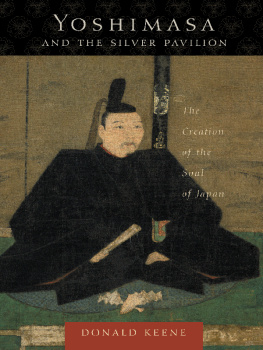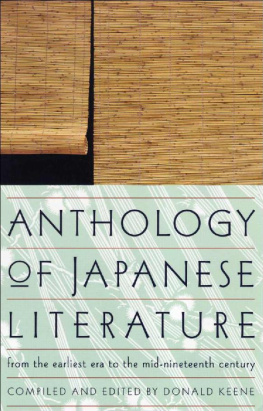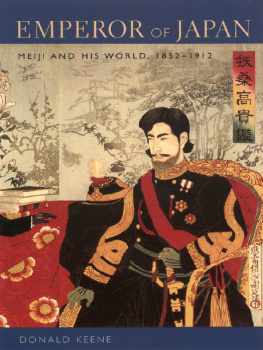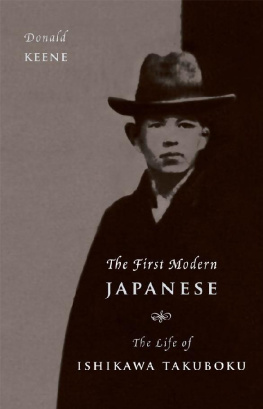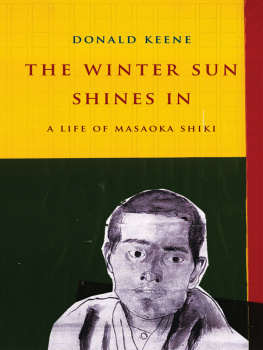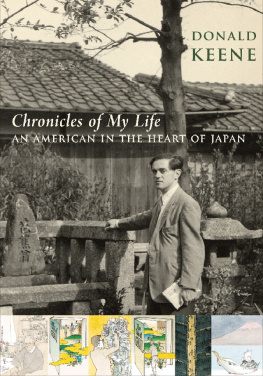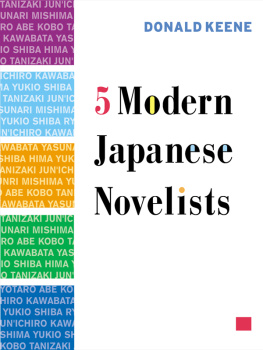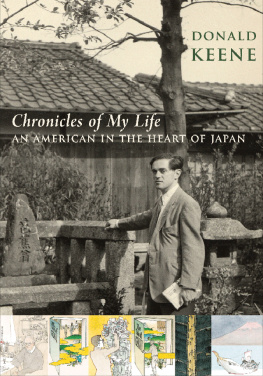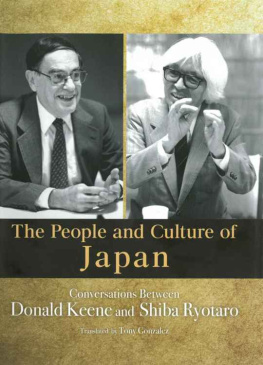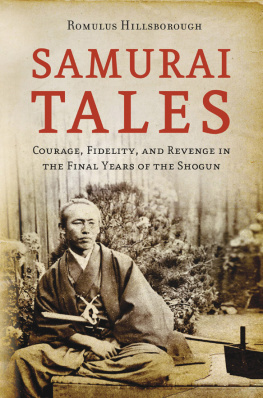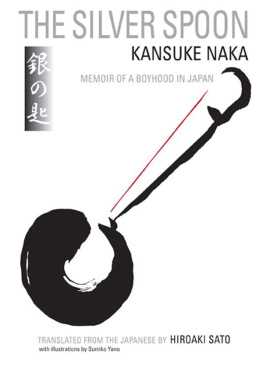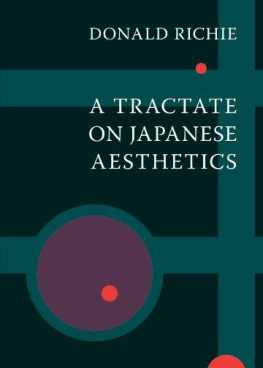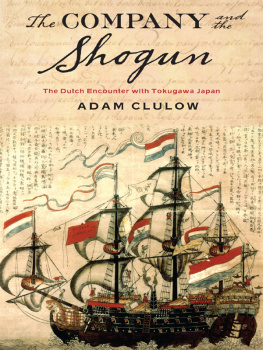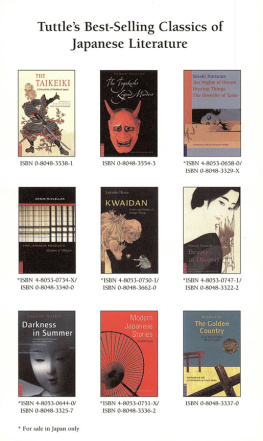YOSHIMASA
AND THE
SILVER PAVILION
Asia Perspectives
Asia Perspectives
HISTORY, SOCIETY, AND CULTURE
A series of the East Asian Institute,
Columbia University,
published by Columbia University Press
Carol Gluck, Editor
Comfort Women: Sexual Slavery in the
Japanese Military During World War II
by Yoshimi Yoshiaki
The World Turned Upside Down:
Medieval Japanese Society
by Pierre Franois Souyri, tr. Kthe Roth

Wooden statue of Ashikaga Yoshimasa, dressed in the robes of a Zen priest. (Courtesy Jish-ji, Kyoto)
Donald Keene
YOSHIMASA
AND THE SILVER PAVILION
The Creation of the Soul of Japan

COLUMBIA UNIVERSITY PRESS
NEW YORK
Columbia University Press wishes to express its appreciation for assistance given by the Weather-head East Asian Institute Publications Program and The Blakemore Foundation toward the costs of reproducing the color illustrations in this book.
Columbia University Press
Publishers Since 1893
New York Chichester, West Sussex
cup.columbia.edu
Copyright 2003 Donald Keene
All rights reserved
E-ISBN 978-0-231-50386-0
Frontispiece: The Ginkaku, or Silver Pavilion.
(Courtesy Jish-ji, Kyoto; photograph by Akira Nakata)
Library of Congress Cataloging-in-Publication Data
Keene, Donald
Yoshimasa and the Silver Pavilion : the creation of
the soul of Japan / Donald Keene.
p. cm. (Asia perspectives)
Includes bibliographical references and index.
ISBN 0231130562 (ALK. PAPER)
1. Ashikaga, Yoshimasa, 14361490.
2. ShogunsBiography.
3. JapanHistoryMuromachi period, 13361573.
4. Ginkakuji (Kyoto, Japan)
I. Title. II. Series
DS865.A82K44 2003
952 023092dc21 2003053124
A Columbia University Press E-book.
CUP would be pleased to hear about your reading experience with this e-book at
To the memory of Shimanaka Hji (19231997),
friend and publisher
CONTENTS
| 1338 | Ashikaga Takauji is appointed shogun, establishing the Muromachi bakufu (shogunate) |
| 1358 | Takauji dies. Ashikaga Yoshiakira becomes shogun |
| 1367 | Yoshiakira dies |
| 1368 | Ashikaga Yoshimitsu becomes shogun. Ming Dynasty is founded in China |
| 1369 | First Ming mission arrives in Kysh |
| 1374 | Yoshimitsu sees n for the first time and gives his patronage to Kanze Kanami and Zeami |
| 1392 | Northern and Southern Courts unite |
| 1394 | Yoshimitsu resigns as shogun in favor of his eight-year-old son, Ashikaga Yoshimochi, but remains daj daijin (prime minister) |
| 1397 | Yoshimitsu builds Kinkaku-ji (Temple of the Golden Pavilion) |
| 1408 | Yoshimitsu dies. Yoshimochi assumes power |
| 1423 | Ashikaga Yoshikazu becomes shogun |
| 1425 | Yoshikazu dies. Yoshimochi resumes functions of shogun |
| 1428 | Yoshimochi dies |
| 1429 | Ashikaga Yoshinori becomes shogun |
| 1441 | Yoshinori is killed at house of Akamatsu Mitsusuke. His seven-year-old son, Ashikaga Yoshikatsu, succeeds him. Peasant uprisings and violence in the capital lead to the issuance of the first tokusei (cancellation of debt) |
| 1443 | Yoshikatsu dies. His younger brother, Ashikaga Yoshimasa, becomes head of the Ashikaga family |
| 1445 | Hosokawa Katsumoto is appointed kanrei (shogunal deputy) |
| 1455 | Yoshimasa marries Hino Tomiko |
| 1458 | Yoshimasa builds new Hana no gosho (Palace of Flowers) |
| 1465 | Tomiko gives birth to a son, Ashikaga Yoshihisa |
| 1467 | nin no Ran (nin War) breaks out at Kami Gory Shrine in Kyoto. Rival forces are the Hosokawa and Yamana families |
| 1473 | Yoshimasa resigns as shogun in favor of his son, Yoshihisa |
| 1477 | nin no Ran ends inconclusively |
| 1481 | Yoshimasa and Tomiko separate |
| 1482 | Construction begins on Higashiyama retreat, beginning the Higashiyama era |
| 1485 | Yoshimasa enters Buddhist orders as a Zen priest |
| 1487 | Completion of kaisho, the meeting place at Higashiyama retreat |
| 1490 | Yoshimasa dies |
| 1493 | Completion of Ginkaku (Silver Pavilion) |
Only the first ten shoguns of the Ashikaga family appear in this genealogical chart. The dates indicate the years when a shogun reigned, not those of his birth and death. The numbers indicate the order of succession. Yoshimochi, who had abdicated in favor of his son, Yoshikazu, resumed the functions but not the title of the shogun from 1425 to 1428, following Yoshikazus death. Yoshimi did not serve as shogun, but his son Yoshitane succeeded as the tenth shogun.

In 1953 when I was first living in Kyoto, I often went to a nearby temple, Tji-in, in order to escape the din of the children in the school next door. The temple was virtually deserted in those days. I never saw a priest, though I was told that one came every week from the Tenry-ji, a temple of the same branch of Zen. The only persons I ever encountered in the temple were a few young men studying for their university entrance examinations. The temple was neglected. Tall weeds sprouted from the roofs of the gates and temple buildings, and the fusuma-e, the paintings on the sliding doors between the rooms, said to be the work of the celebrated Kano Sanraku, were smudged and torn, especially around the metal fittings. I dont recall ever seeing a visitor, though even in those days the celebrated stone and sand garden of the nearby Ryan-ji attracted a constant stream of tourists, both Japanese and foreign. The Tji-in was an ideal place to study without noise or other interruption.
Apart from the main buildings, the temple includes a small, curving pond in the shape of the character kokoro. Similar ponds are found in the precincts of other Zen temples, perhaps because the use of the mindone of the meanings of kokorois especially important in Zen Buddhism.
Tji-in was originally founded in the fourteenth century at the foot of Mount Kinugasa, in fulfillment of a vow made by Ashikaga Takauji (13051358), the first of the Ashikaga shoguns. His inconspicuous stone gravestone in the temples garden is hardly of the magnificence one might expect of the tomb of the man who founded the dynasty of shoguns who ruled Japan from the fourteenth to the sixteenth century. Indeed, there could be no greater contrast to the elaborate mausoleum erected in memory of the founder of the next dynasty of shoguns, Tokugawa Ieyasu (15431616).
In recent years, an effort has been made to increase Tji-ins appeal as a tourist attraction. The pond, and indeed the whole templebuildings, gardens, and wallslook far better today than they did when I first knew them, though I remember nostalgically the poetic neglect. The interior of the main building has been refurbished; the fusuma-e are now protected by glass; and a much larger area of garden than I had seen before has been opened to the public. Picture postcards on sale in the temple attest to the beauty of its seasonal flowers and leaves, but I have no recollection of any flowers or colored leaves fifty years ago. For that matter, I even have difficulty in associating picture postcards with the gloomy presence of the Ashikaga shoguns. One small building, however, remains exactly as I remember it from the past: the Reik-den, the hall where the Ashikaga shoguns are enshrined.
Next page
